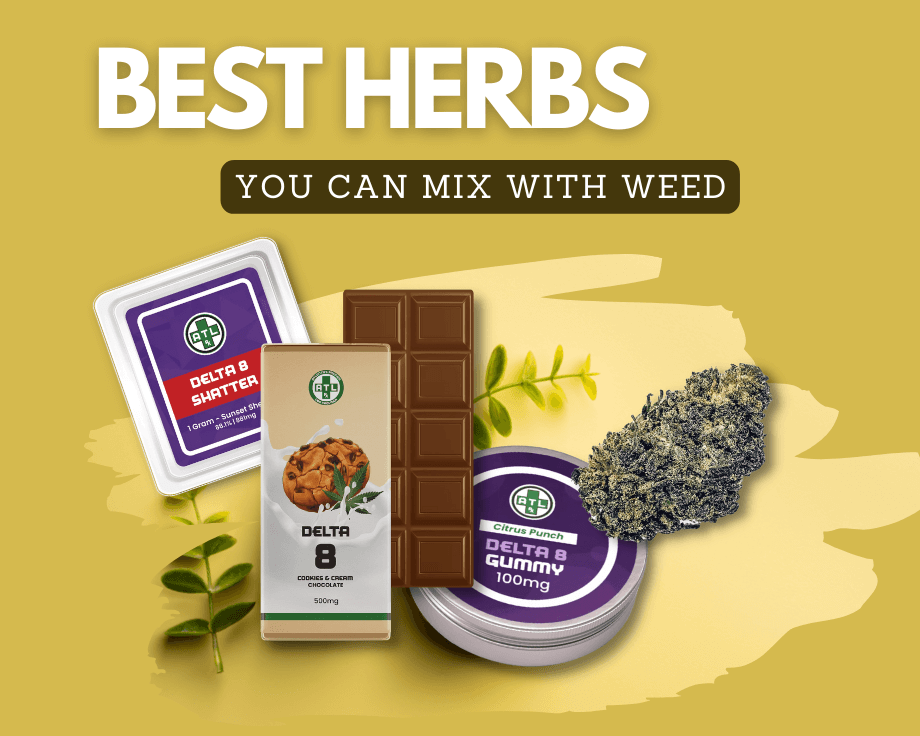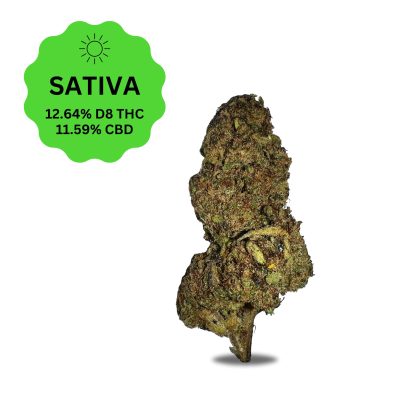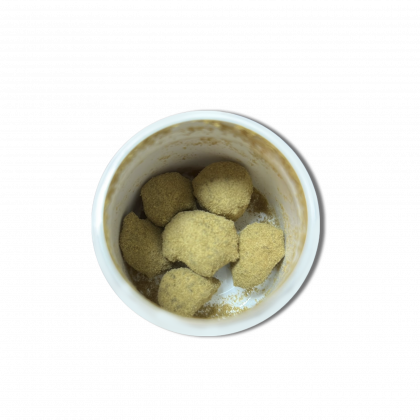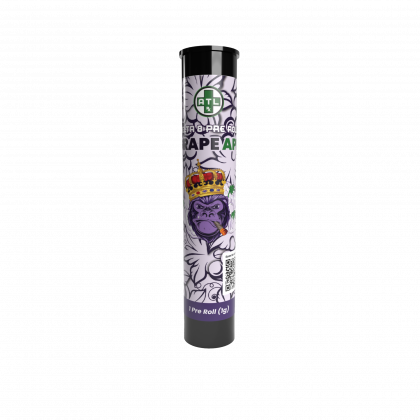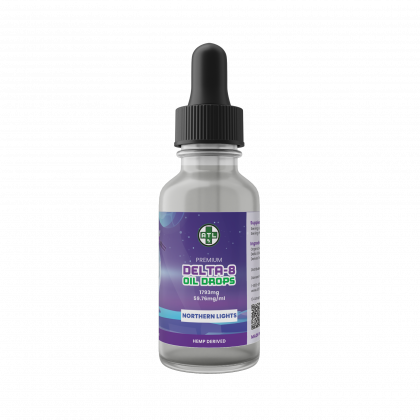The flavor of your toke can be enhanced by using herbal mixtures or burn mixes that incorporate marijuana and medicinal plants like mullein or dried flowers like lavender.
“Roll your own” is taken to a new level by adding specific herbs or medicinal flowers to your cannabis as an herbal toking blend.
Herbal mixtures are a terrific way to switch up the marijuana experience, whether you use hand rolls or load a pipe.
Table of contents:
- What Are the Benefits of Mixing Herbs with Cannabis?
- Top 15 to Combine with Marijuana or Hemp
- What Herbs Go Well with Weed?
What Are the Benefits of Mixing Herbs with Cannabis?
Three factors may influence a person’s decision to combine a specific herb with cannabis:
The blend’s flavor needs to be improved, first and foremost. The ideal herbs for this are aromatic ones like rosemary, lavender, or damiana.
The second justification is that the combination offers additional advantages. You may, for instance, use relaxing herbs like chamomile, blue lotus flower, or lavender when creating a combination for the evening.
The third justification is to counteract the adverse effects of marijuana. A typical instance is using herbs like mullein to soften the harshness of the smoke.
-
Delta 8 THC Flower$9.99 – $169.99
-
Delta 8 Moon Rocks$39.99 – $119.99
-
Delta 8 Pre Rolls$9.99 – $12.99
-
Delta 8 THC Tincture$39.99 – $129.99
You can enhance particular aspects of your experience depending on the herbs you use, such as:
- Encourage calmness
- Amplify positive and energizing feelings
- Boost the desired sensations.
- Create more vivid dreams
When you buy Delta 8 online at ATLRx, we have a wide selection of Delta 8 hemp flower and Delta 8 concentrates that you can mix and match to find the perfect blend. Delta 8 and hemp flowers are used in our products, which are of the highest quality available.
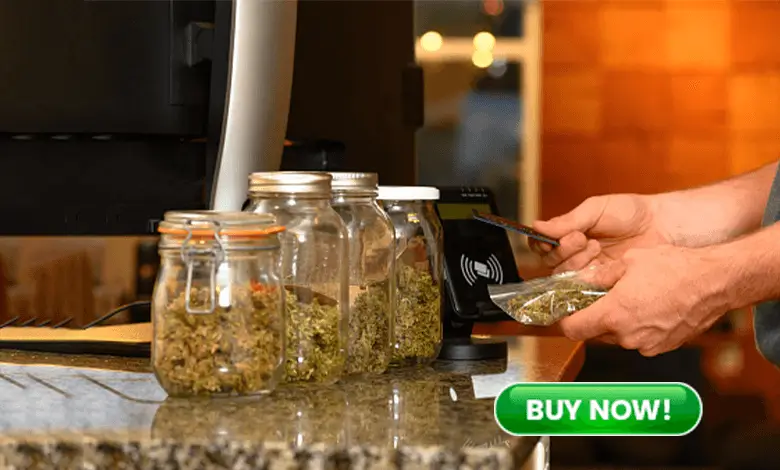
Top 15 to Combine with Marijuana or Hemp
The list of common herbs you can use in your burning blend is broken down below, along with suggested dosages for each herb when combined with cannabis flower.
Try a few ratios and combinations when trying various herbal blends until you find the concoctions that you like.
Find the herbal blend that works best for you by experimenting with a few. Depending on the impact profile you’re looking for from experience, you might want to add more or less of a certain herb.
1. Tobacco
Addition amount: up to 50%
Cannabis and tobacco are frequently combined to produce energizing toking blends. After the tobacco plant’s leaves are harvested, they are dried out and cured, making it simple to add them to a blend for a pipe or hand-rolled cigarette. This combination is a classic blend that is enjoyed by many. Most people wrap their hemp flower in blunts, or cigar papers, which are typically made from a blend of tobacco and paper.
Although tobacco seems to have a negative reputation in today’s culture, it has been used for a variety of purposes throughout history. Nicotine, which is present in tobacco, has certain effects that have been studied since the arrival of cigarettes. These characteristics tend to intensify marijuana’s effects and make them feel greater when combined.
2. Mullein
Addition amount: up to 30%
The small, shrubby mullein plant, which is native to Asia and Europe, blooms with tall, vivid flowers and is often perennial or biannual. It has been smoked for centuries because of its calming effects on the respiratory system. Additionally, it is reported to have diuretic and sedative properties.
When smoked, mullein emits a perfume resembling a campfire and has a scent similar to black tea. It has very delicate flavors with hints of cedar and woodsy overtones. This herb is often used as the base of smoking blends due to its mildness. Despite having some bite, it gives off a very smooth smoke and burns consistently.
Mullein has silky, woolly, or cotton-like leaves that are highly fluffyThe thick stems are easy to break apart and remove from the plant. . It requires a little finesse to roll because of its light and airy nature, but it can usually be done. Mullein is said to have a gentle, relaxing impact on a persistent cough and makes a wonderful base herb, in my opinion.
Mullein serves a variety of functions and, at its core, makes the ideal foundation for a herbal, smoky combination. It works with Indicas after a long day or Sativas to keep your focus as you study.
This herb is a silent partner that keeps the attention on the cannabis because of its mild flavor, which lets the distinctive flavor of cannabis come through. This would make for an excellent blend with CBD hemp flower.
3. Rose Petals
Addition amount: up to 10%
One of the oldest and most recognizable flowers, the rose, can be included in your herbal cannabis blend. The familiar, alluring aroma of roses is present in a variety of colors and types. Due to its mineral and antioxidant characteristics, the rose has been utilized in cosmetics for thousands of years. You may have noticed folks making attractive, tobacco-free blunts in recent years by substituting the pliable petals for the conventional blunt wrap.
Rose has a really lovely aroma that is slightly sweet and almost distinctly floral. When dried and powdered, the petals themselves have a scent that is almost candy-like. The flavor had a light rose flavor and was subdued but lively and fresh. Although I matched it at roughly 40/60, I believe you might go higher for a stronger rose flavor.
Rose burns quite slowly, which makes it a great partner for cannabis for a mellow, even burn that doesn’t go out too quickly or frequently. It may be broken into little pieces without the aid of a grinder. It presented no difficulties when rolled up with a favorite strain. The results were quite tranquil and calming in a laid-back, rural manner. It may be a good option for date night because it is a mood enhancer and, according to some, an aphrodisiac.
Rose gives cannabis an elegant, almost opulent vibe when combined. It will blend well with the majority of downer strains due to its potential relaxation support properties and would be especially excellent for an after-dinner or end of the day blend. The red wine of herbal mixtures, if you will. Rose has a flavor profile that complements any strain with floral or citrus undertones, and I have a feeling it would also be a fascinating addition to your preferred diesel strain.
4. Mint
Addition amount: up to 15%
A cannabis burning combination may potentially be advantageous from the inclusion of the herb peppermint or “mint.” Marijuana is given a cool flavor with the use of mint. It is thought to provide healing and regenerating effects on both the body and the mind.
When smoked, mint is said to have a calming impact profile and can slightly amplify the effects of marijuana.
For people who want to stop smoking cigarettes, smoking mint has occasionally been compared to the flavor of menthol and could be a decent alternative.
5. Lavender
Addition amount: up to 15%
Lavender, a Mediterranean native, is best known for its calming, comforting aroma. Most people are aware of this vibrant perennial evergreen shrub’s use in essential oils or even sweets, but fewer are aware that it may also be savored in a smoking combination.
When it comes to smoking, lavender is predictable. Floral, cheerful, and calming, lavender gives a flavor to cannabis that elevates any linalool terpenes in your flower. The familiar scent grows stronger as it burns, resembling a rich lavender incense as opposed to the more common, delicate aroma.
The blooms are delicate and small enough to be folded up without breaking them. It fits perfectly into a joint and, as an added benefit, will leave your fingertips smelling faintly of lavender. It has a cleaner burn and is more subdued than you might anticipate from a plant with such a potent fragrance. It was comforting and familiar to me.
Lavender is a herb recognized for its relaxing effects, so it makes sense to use it in conjunction with an Indica before bed. Pick this herb to help you decompress when you need to. To optimize the lavender effect, combine it with strains that are rich in linalool or use complementing terpenes like pinene or eucalyptol.
6. Blue Lotus Flower
Addition amount: up to 50%
Dried blue lotus flowers can be included in herbal blends. It provides a relaxing impact that improves marijuana’s characteristics and contributes to its mind-expanding benefits.
The substances apomorphine and nuciferine are found in the blue lotus flower. These substances are regarded as mild narcotics and frequently cause clarity.
Many people who add blue lotus flowers to herbal mixtures claim that it makes dreams more vivid.
7. Blue Vervain
Addition amount: up to 25%
Blue vervain (Verbena hastata) is a plant with a few ethnobotanical uses. When dried, the blue vervain plant’s pale purple blooms can be used with cannabis mixtures.
Its qualities are thought to be calming and even uplifting. Some users claim that blue vervain has assisted them in achieving astral projection or lucid dreaming experiences.
8. Chamomile
Addition amount: up to 25%
The relaxing properties of chamomile are among its most well-known uses, especially when burned. When combined together in an herbal mixture, this amplifies the calming benefits of cannabis.
Chamomile adds a lovely fragrant profile to the mixture as well.
In general, chamomile is calming and can combine nicely with cannabis in a herbal blend.
9. Damiana
Addition amount: up to 25%
Damiana is a plant that is indigenous to places like southern Texas, the Caribbean, and South, and Central America. The plant bears lovely, vivid yellow flowers. Later in the season, its fragrant blossoms give way to fig-like fruits.
Since the time of the ancient Aztecs and Mayans, damiana has been traditionally utilized as an aphrodisiac. Additionally, it is said that damiana may provide calming, unwinding benefits for the body and psyche.
Damiana has a pleasant appearance, aroma, and flavor. It is a tasty plant that tastes like hickory and is best described as minty and peppery. Overall, it produces a smooth cigarette. Its aroma, which is mildly spicy and has hints of anise and citrus, fits this description as well.
It has few stems to remove and little green leaves that are simple to tear up. It burns quite slowly and cleanly and rolls easily. Damiana has been reported to provide calming and upbeat effects. It had gentle, gratifying, and euphoric effects and was calming to the nerves.
Damiana is a very calming herb on its own; therefore, when combined with cannabis, it produces an herbal cocktail designed for interesting experience Combine that with a soothing Indica strain to make a spliff like that. A strain with a bright yet earthy flavor like those high in pinene—the piney terpene—is a good match for the hickory and mint notes of Damiana. Consider the hybrid Super Silver Haze if you’re looking for a strain that checks both of these boxes.
10. Jasmine
Addition amount: up to 10%
A cannabis mixture may benefit from the inclusion of dried jasmine flowers. It has a flavor and scent that are neutral and sweet, which makes smoking it a little softer and less unpleasant.
The effects of marijuana are significantly enhanced by its impact profile, which is soothing. Like many other botanical flowers, jasmine has aphrodisiac properties that heighten desire.
11. Lemon Balm
Addition amount: up to 25%
Peppermint and lemon balm are closely related plants. Lemon balm pairs nicely with Sativa cannabis strains since it has a distinctively sweet and lemony aroma rather than a minty one.
This plant is employed in conventional herbalism for its potent calming and balancing properties. The pleasant aroma is really an extra benefit.
12. Mugwort
Addition amount: up to 50%
Mugwort is a plant that grows in North America, Northern Europe, and Asia. Purple stems and dark green leaves make up its appearance. This plant has been used historically to treat uterine and menstrual problems.
Mugwort tastes like sage and has a fragrance similar to green tea. It is similar to the flavor of a light cigar or cigarillo since it is spicy, nutty, and has a hint of musk. It burns slowly, evenly, and smoothly, and it emits thin plumes of smoke that can occasionally be a little harsh. In moderation, though, it can be pleasant and joyful.
It is simple to roll mugwort since it is fluffy, soft, and has a cotton-like property that makes it attach to itself. The stems are numerous but easy to distinguish.
Mugwort has reportedly been used historically to produce vivid, lucid dreams. Mugwort is a great herb to fill a spliff, even if it doesn’t offer the same blatantly tranquil or relaxing effects as cannabis. It’s a particularly suitable option for a calming bedtime mix because of its rumored capacity to influence dreams. Its sage flavor complements strains rich in linalool, the lavender terpene, beautifully.
13. Passionflower
Addition amount: up to 25%
Passionflowers are perennial climbing vines native to South America, Asia, and parts of the United States. The plant features stunning flowers with distinctive, complex petals in a showy display.
According to legend, a passionflower is supposed to reduce stress, calm the mind, and ease restlessness.
Passionflower may not smell particularly enticing at first. It smelled strongly like grass, which I found to be generally unpleasant. It was shown to have a more pleasant profile after burning, though. It has an earthy flavor and a mild, clove-like aftertaste, as well as some sting. It was a nice, enjoyable smoke.
The herb’s leaves have a range of unique forms and colors, making them incredibly colorful and appealing to the eye. Although I found the herb to be simple to break up and roll, it has huge stems that need to be removed. Nerves are calmed by the modest, mild calming action of passionflower.
A cannabis high pairs beautifully with passionflower. Potent, high-THC strains that some users might find overly stimulating can be balanced off by their moderate effects. Passionflower also has a toasty, clove-like flavor that goes well with hot strains like Hash Plant, which are high in the peppery terpene caryophyllene.
14. Sage
Addition amount: up to 25%
Sage has been used for many years as a spice and for medicinal purposes. Sage is a potent herb with lots of advantages. It has a reputation for cleansing properties, which may be due to its potent flavor and scent.
Sage is supposed to make marijuana’s high feel stronger. When consumed in greater quantities, it makes the herb stronger and might encourage lucid dreaming or trance-like states.
Sage gives off a lovely aroma and helps soften the smoke when used in lesser quantities.
15. Kanna
Addition amount: up to 25%
A traditional African plant known as kanna is smoked for its energizing effects. It’s a terrific way to give general “good vibes” to an herb blend.
Kanna is said to alleviate adverse reactions and overthinking or overstimulation when added to a cannabis combination.
What Herbs Go Well with Weed?
Many cannabis users like smoking the herb on its own, but combining it with particular herbs or dried flowers can significantly enhance the experience.
Here, experimenting a little with the ratios is helpful. You should experiment with different ratios, add various herbs, and then see what works best for you.
Smoking blends that incorporate hemp or cannabis with organic herbs and plant products are a good approach to raising the overall impact profile of the blend, improving taste and scent, and lessening the harshness of the burn.

